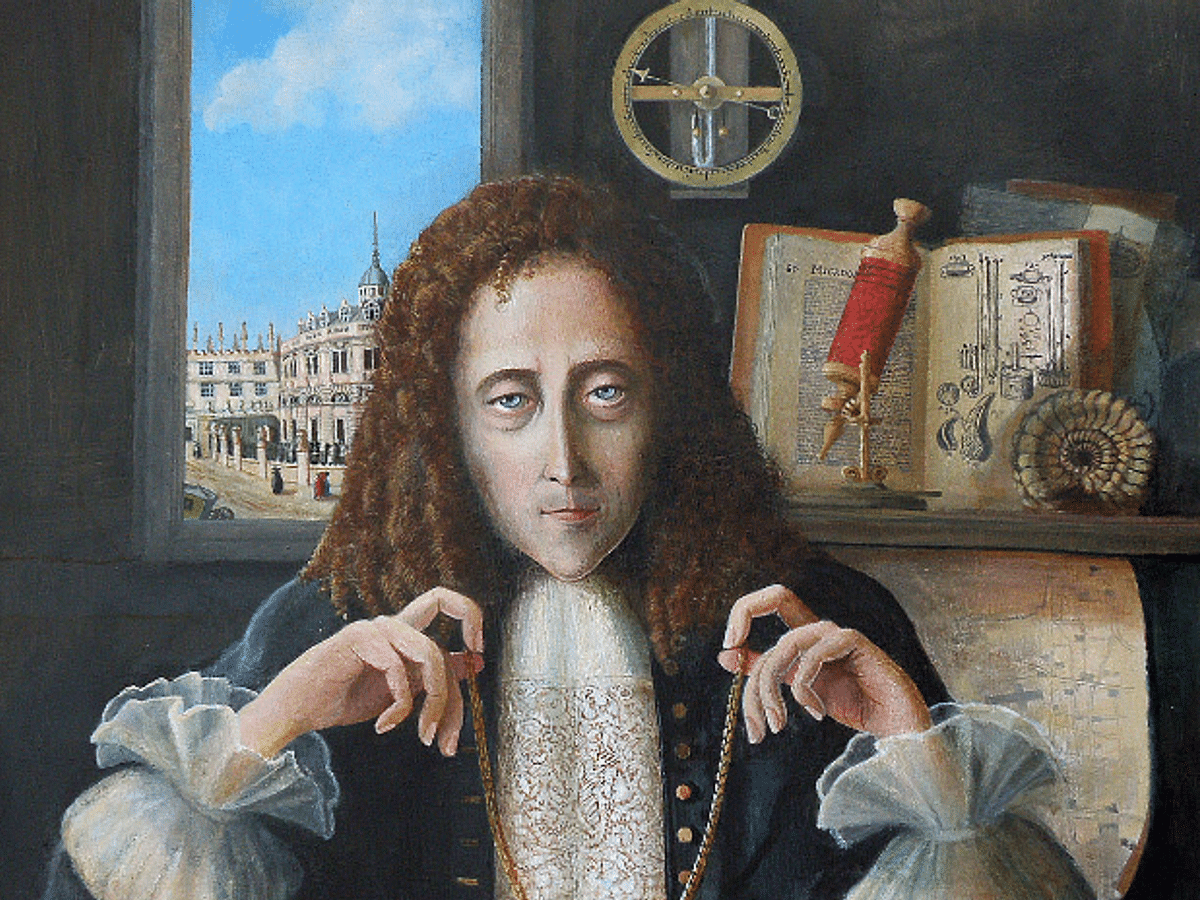Robert Hooke: The Renaissance Man of Science
Robert Hooke (1635-1703) was an English polymath whose contributions spanned many fields of science and engineering. Born on July 18, 1635, in Freshwater on the Isle of Wight, Hooke was the son of a curate. His early education was marked by illness, which led to a largely self-directed study, and a natural curiosity that drove him to explore various scientific disciplines.
Hooke entered Westminster School in London, where he excelled in Latin and Greek and developed a keen interest in mechanics. In 1653, he joined Christ Church, Oxford, where his intellectual horizons expanded. At Oxford, he became associated with notable scientists like Robert Boyle, assisting him in experiments on gases and the development of the air pump. This period laid the groundwork for Hooke’s future contributions to science.
Hooke’s most famous work, Micrographia (1665), revolutionized scientific thought by documenting observations made with a microscope. The book detailed the structure of various materials and organisms, including the cellular structure of cork, which led Hooke to coin the term “cell.” His meticulous drawings and descriptions brought the microscopic world to the forefront of scientific inquiry and public interest.
In addition to his work with microscopy, Hooke made significant contributions to physics and astronomy. He formulated Hooke’s Law, which describes the linear relationship between the force exerted on a spring and its extension. This fundamental principle of elasticity has applications ranging from everyday objects to complex engineering systems.
Hooke was also instrumental in the early development of planetary motion theories. He engaged in a famous dispute with Isaac Newton over the formulation of the law of universal gravitation, arguing that he had developed the concept before Newton. Despite this controversy, his work on gravitational forces and planetary orbits was foundational for the field.
As the Curator of Experiments for the Royal Society from 1662, Hooke’s role was crucial in advancing experimental science. He conducted numerous experiments and presented his findings to the society, covering topics as diverse as the properties of air, the behavior of light, and the mechanics of motion. His diverse interests and contributions earned him the reputation of a Renaissance man of science.
Hooke’s innovative designs extended beyond the laboratory. He was a gifted architect and surveyor, collaborating with Sir Christopher Wren in the reconstruction of London after the Great Fire of 1666. His work included the design of several notable buildings and the development of surveying instruments.
Despite his achievements, Hooke’s legacy was somewhat overshadowed by his contentious relationships with contemporaries like Newton. His lack of a prominent public persona and the loss of many of his papers after his death contributed to his relative obscurity in the history of science.
Robert Hooke passed away on March 3, 1703, but his contributions remain foundational in various scientific disciplines. His work with microscopy laid the groundwork for cell theory, while Hooke’s Law continues to be a cornerstone in physics and engineering. His diverse achievements exemplify the spirit of inquiry and innovation that drives scientific progress.
